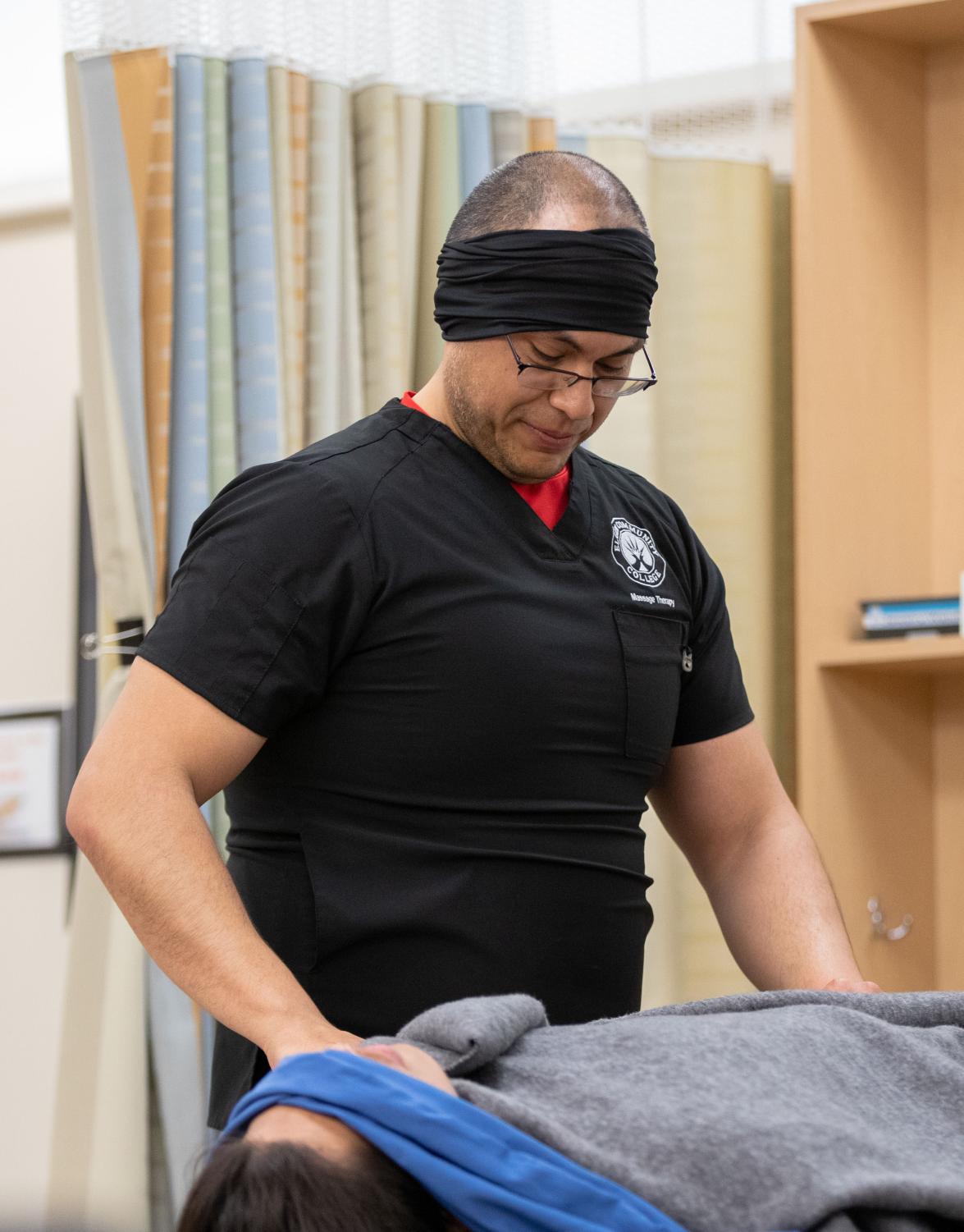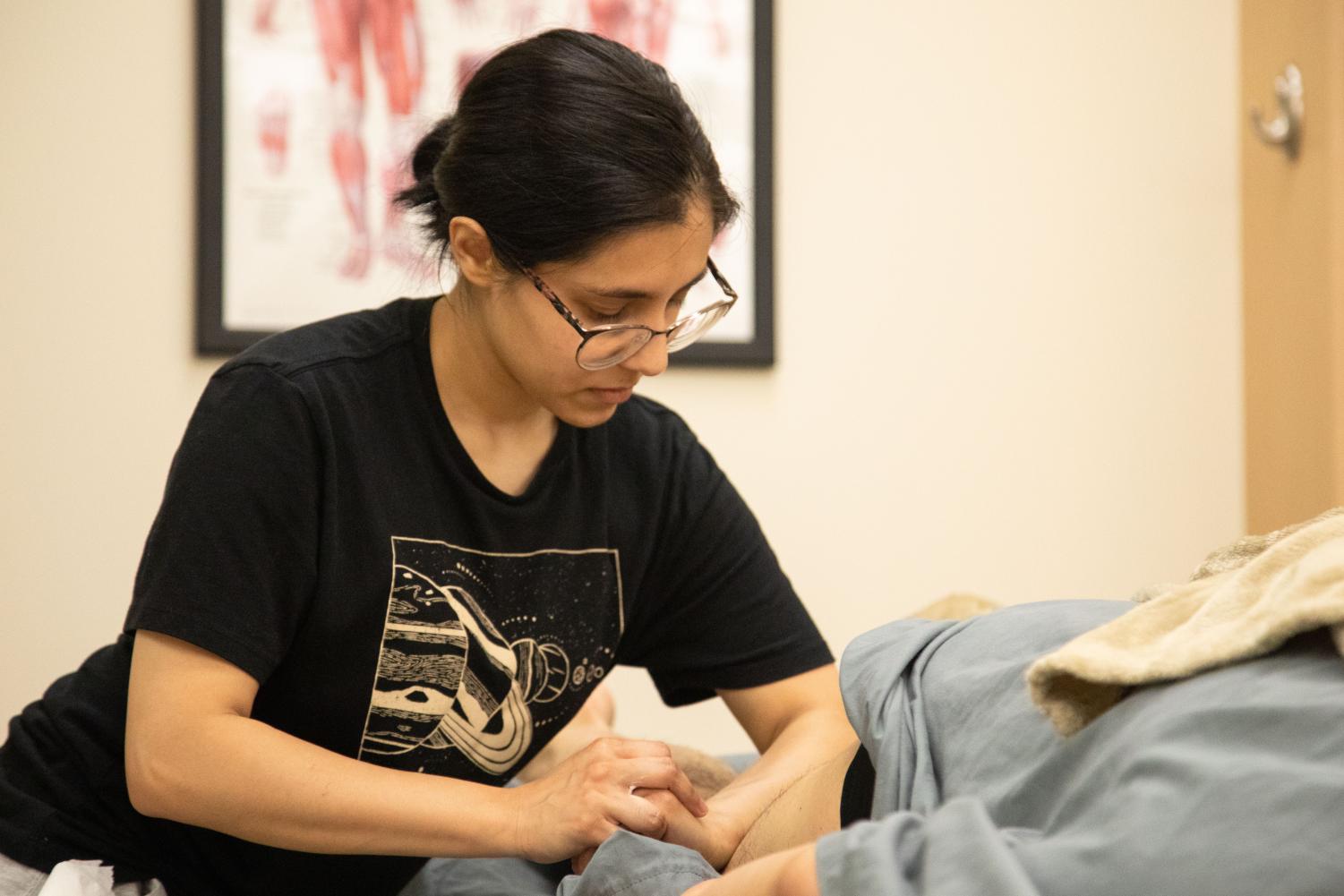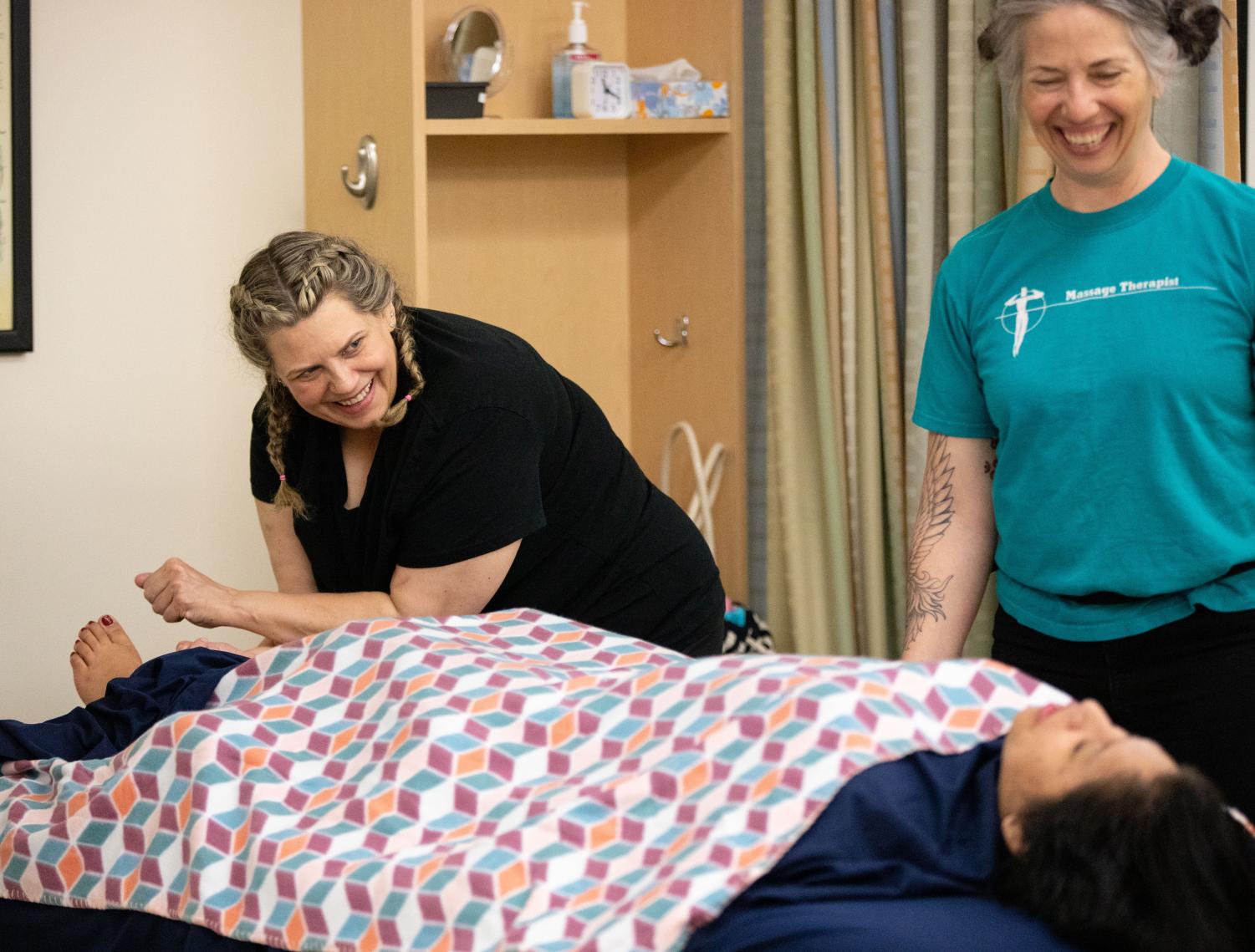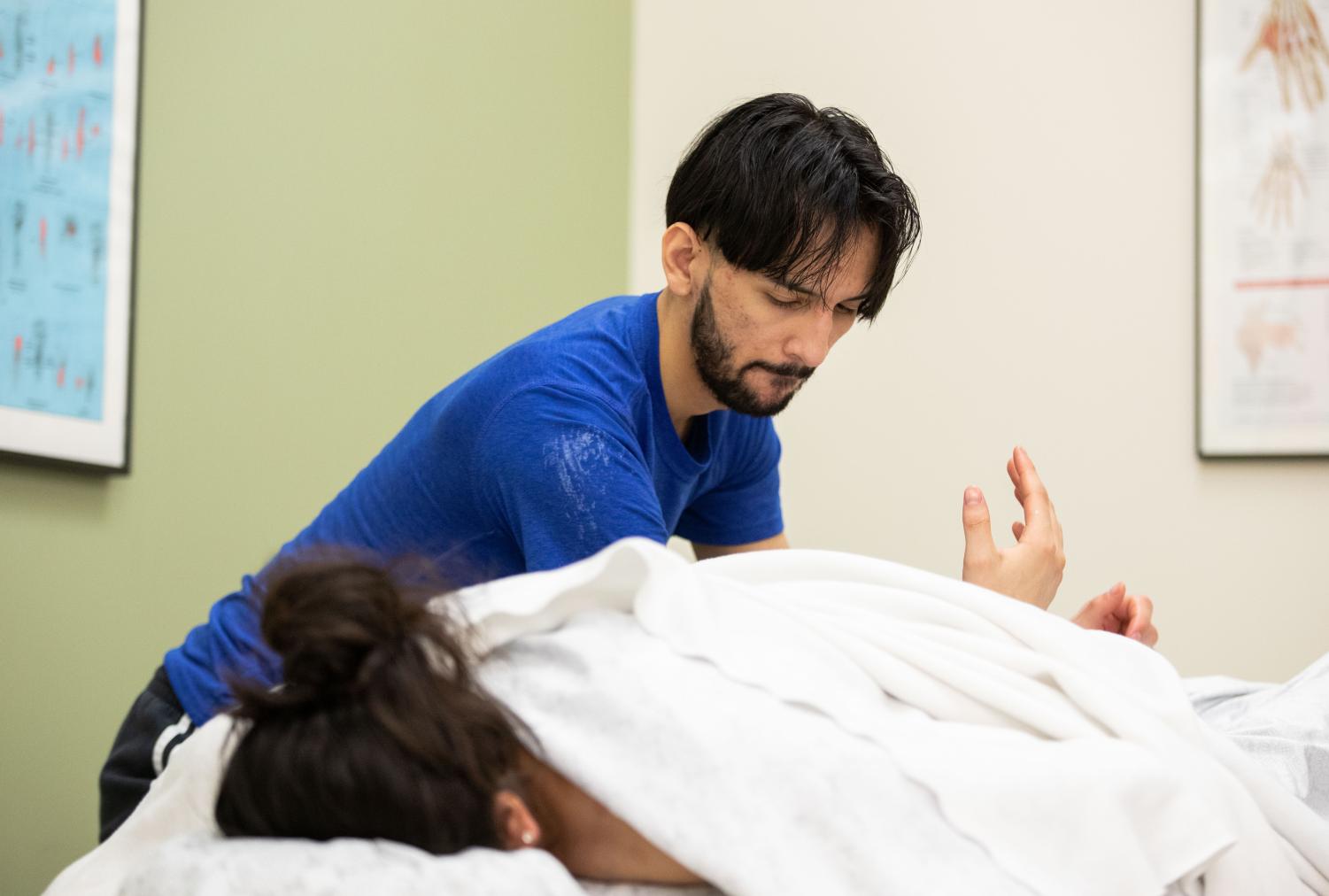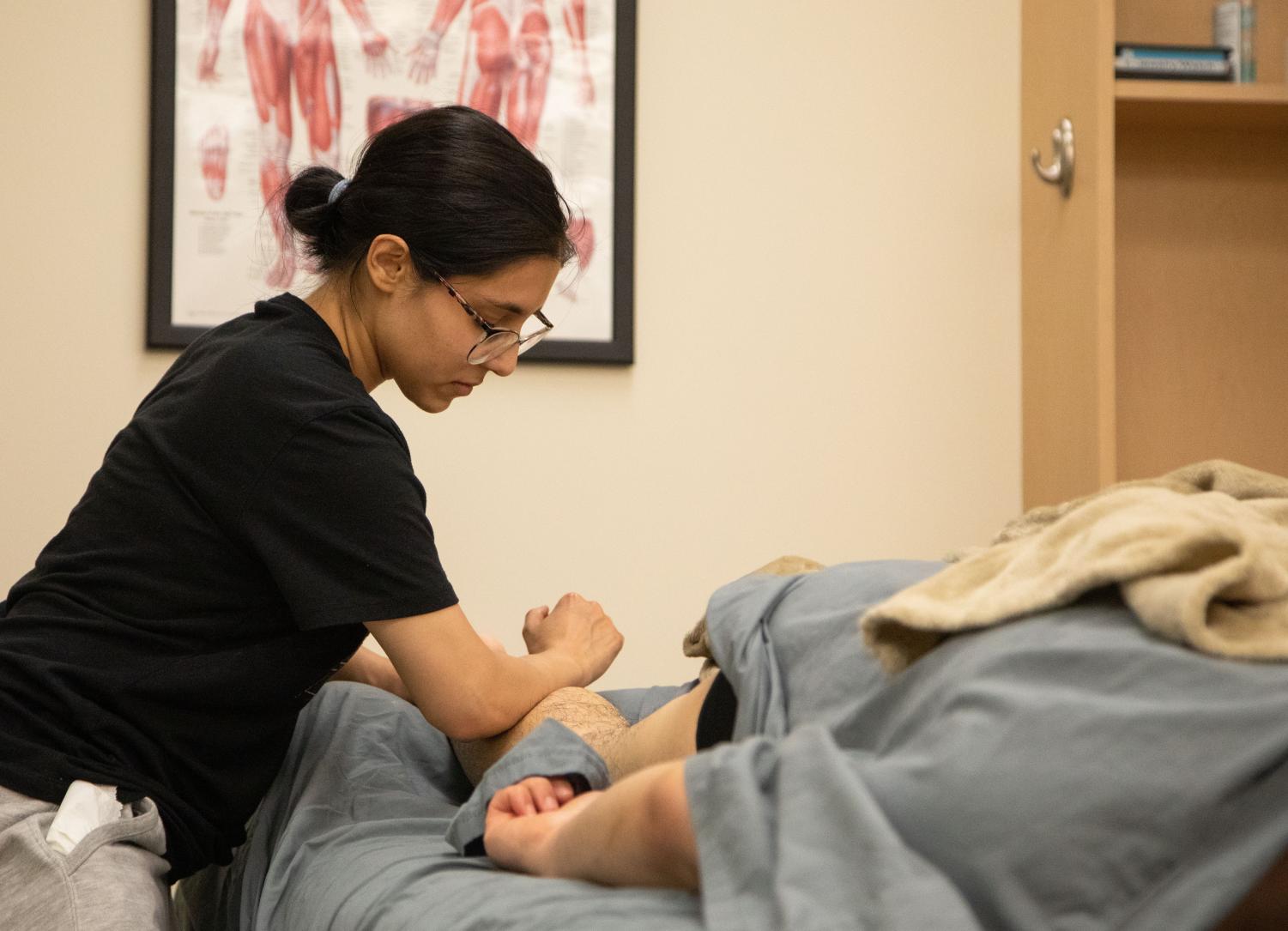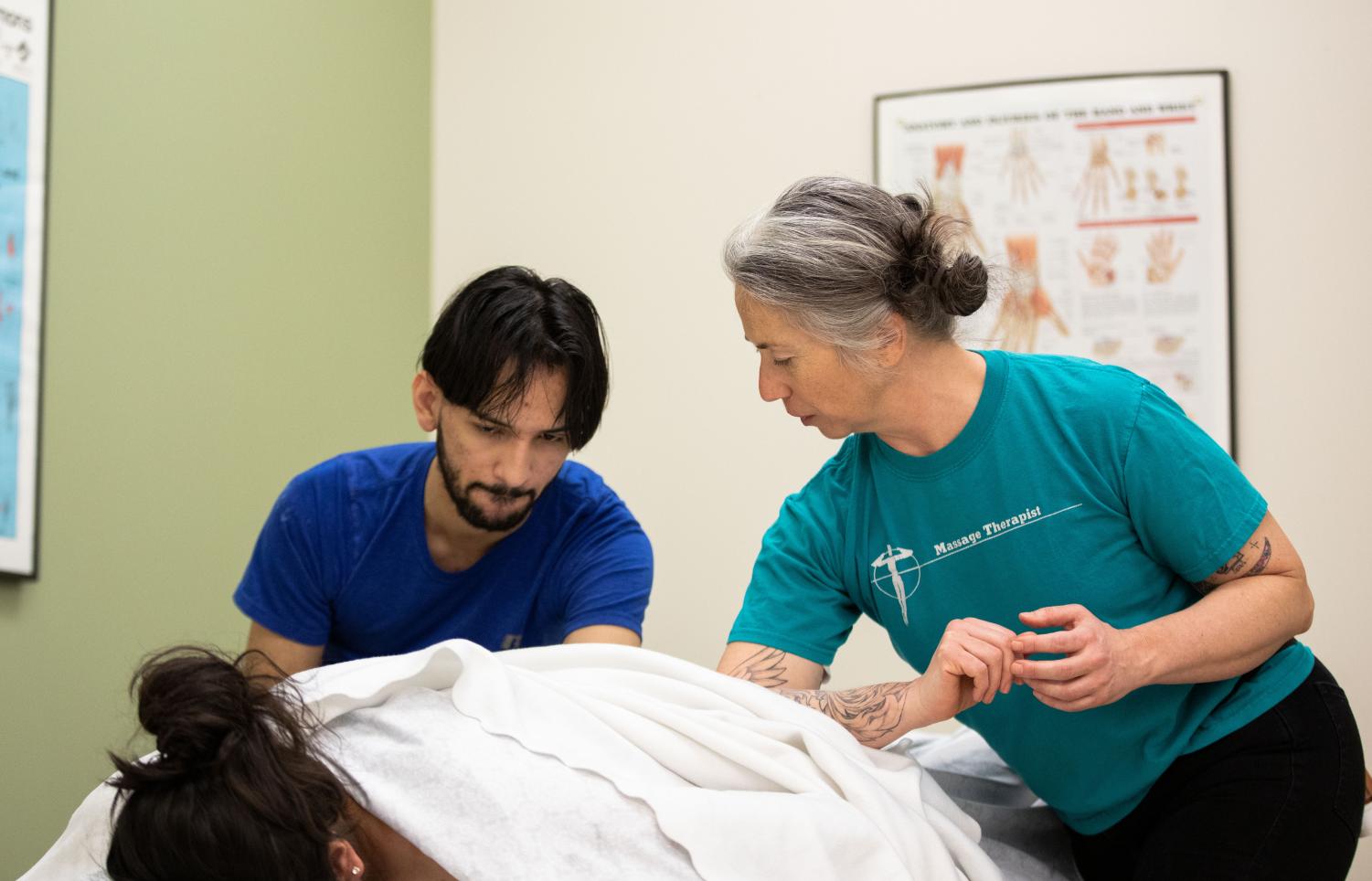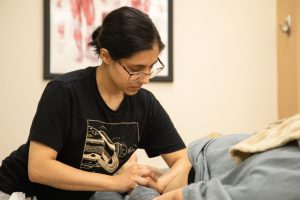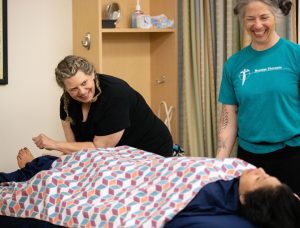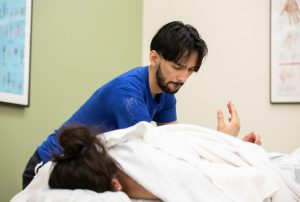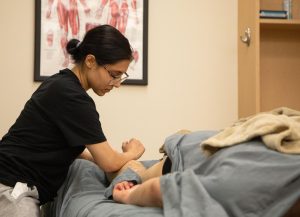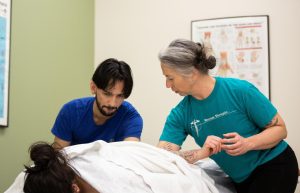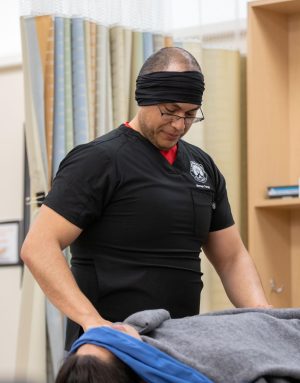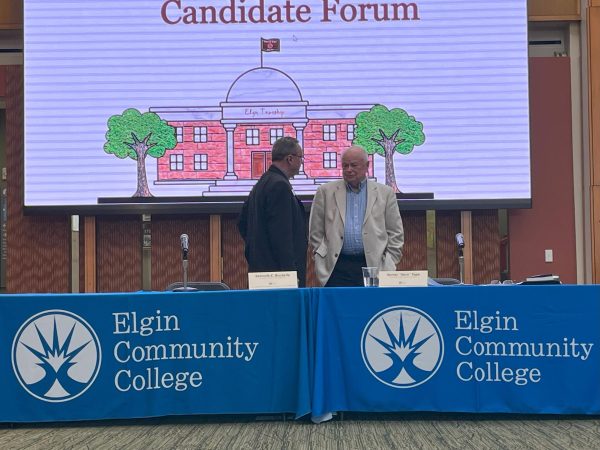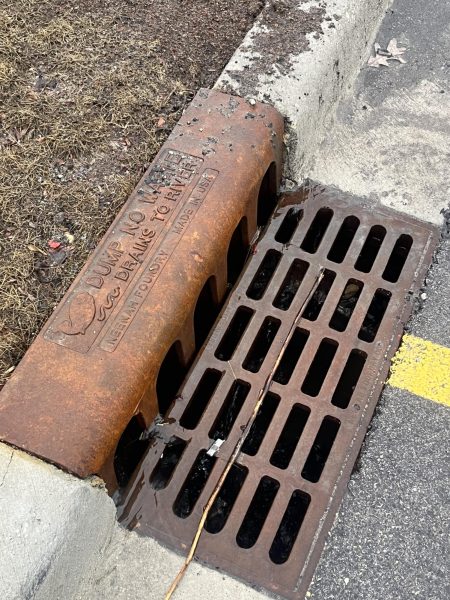Healing hands: Take a look into ECC’s massage therapy program
After starting a family, Lurana Bain was looking for a new, fulfilling career. Elgin Community College was starting up a massage therapy program, and Bain decided to take up a new challenge.
The thought of touch can create some hesitation for some, but Bain was intrigued by it. As Bain started the 4-week clinic, opportunities to be a teaching assistant and consultant arose and she took those opportunities.
Bain is the director of the massage therapy program at ECC. Bain has been at ECC for 20 years and has been instructing this department for 11 years now, watching the program grow and evolve.
The massage program is relatively small, with 10 students enrolling a year. This year, Bain has a class of 14 students from all ages, backgrounds and different areas. Students learn about immune disorder management, chronic pain relief, improved mental health, stress relief, improved sleep quality, speeding the body’s recovery process and disease prevention.
Aspiring massage therapists not only learn about the body, but they learn about creating a welcoming environment for clients. This is a huge part of massage therapy because the client is looking for relaxation and healing, and with that comes vulnerability. Massage therapists should have great interpersonal skills and listening abilities. What Bain describes as being a “detective” is a very important aspect, too. This is because each client is different, and things they say to the massage therapist are important when it comes to professional touch, so they know what areas to focus on and what techniques to use.
In the massage therapy program, students learn about a variety of things. From muscles to chakras, this program covers all different types of healing. Students study the anatomy of the body, pathology and kinesiology, the holistic side of medicine and all different kinds of massage like hot stones, lymphatic drainage or deep tissue. Clinical/therapeutic massage and Swedish massage are introduced to each massage student to handcraft a unique touch of their own.
20-30% of Americans use massage. People who utilize massage use it for many different reasons. There is a holistic healthcare aspect to it that some people venture into, others use it for chiropractic/ sports therapy reasons, and some use it simply for relaxation.
Bain finds that part of the dynamic of massage therapy is that the students’ reasonings for joining all vary.
“When I first came into massage, it was a very entrepreneurial type spirit,” Bain said. “There were no employers, if you wanted to be a massage therapist, you were basically doing it for yourself to have your own practice. Now, there are employers, so it attracts a different kind of student.”
The growing field of massage therapy has grown over the past 8 years. With Bain’s commitment to the program, she has seen the attraction of different kinds of students instead of those who only wanted their own business.
“It was very much career changers or a retirement job,” Bane said. “Definitely not first careers. And now, it’s almost the opposite. At least here [at ECC], I would say it’s more like 75% first careers and 25% second career type of thing.”
Bane sees that there’s a divide of reasons for joining; some knew they wanted to do it since they were young, some discovered massage therapy because they, or someone they loved, was injured, and sometimes, it’s when they stumbled upon it to see if they just like it.
“Watching people transform their lives [is what I like most about teaching massage],” Bane said. “Nobody finishes how they started. Everybody has some kind of transformation that happens whether it’s just becoming that professional, or whether it’s how they look at the world, or how they care for themselves or others. There’s something that happens in the process of getting to watch that is cool.”
Tons of benefits lie in massage:
“There’s research benefits, and then there’s more anecdotal things that we feel happen but there’s no studies to show,” Bain said. “Definitely pain management and reduction of symptoms with depression and anxiety. There’s a lot of things that assist in mobility, especially when people are trying to rehab from an injury with soft tissue work. It’s the overall effect that massage and professional touch has on the nervous system that is responsible for the resting and healing part of our bodies.”
This is still a developing career. Not a lot of students know about this profession, hence why the class size is small. The benefits to this accredited course and career has a licensing pass rate of nearly 100%, in charge of making decisions when it comes to treatments, and gives a sense of recognition and reward to the students choosing this path.
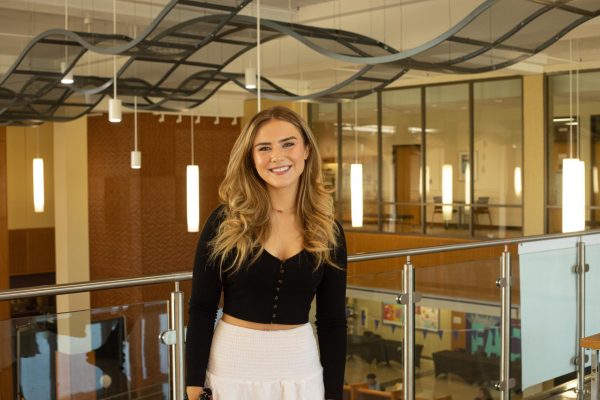
Hi! My name is Indie Wilson and I am a second year student at ECC. I was last year's digital editor and am now taking up managing editor! I have an interest...
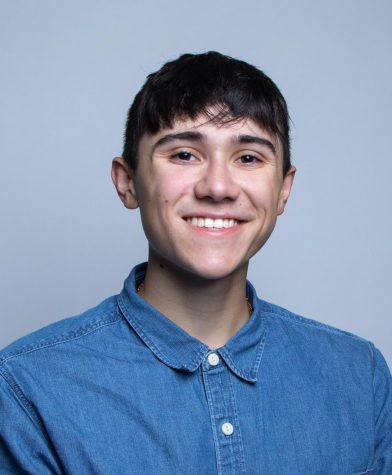
I'm Dominic Di Palermo. I'm the Editor-in-Chief of the Observer. This is my second year at Elgin Community College and my second year with The Observer....



